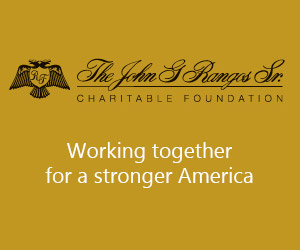A Visit to St. Nicholas National Shrine at the WTC
by Emmanuel E. Velivasakis
A few weeks ago, my wife Orsa and I had the opportunity to pay a visit to the St. Nicholas National Shrine at the WTC. The great majority of my countless past visits, have always been associated with my capacity as a member of the Design Team, to resolve issues or inspect the progress of construction, etc. In this most recent visit however, in addition to the “Technical Eye” of the Structural Enginner which is always present, another just as important purpose was one of pilgrimage and appreciation of a finished edifice, as well as of spiritual in nature. A chance for introspection!

Emmanuel and Orsa Velivasakis
Starting with the “privileged” location of the church itself, which location by the way, yours truly had a great deal to do with its initial identification and eventual adoption on structural grounds, as it seats on top of the hill of the new Liberty park, it has a commanding view of the entire WTC site including the 9/11 Memorial, and inversely is itself readily visible from all of its surroundings as well.

It’s white Pentelic marble which clads the Church’s exterior walls and its dome, is one of its important design characteristics, along of course with its unique architecture, which according to its creator, world-renowned Architect Santiago Calatrava was derived from several religious Byzantine monuments of Constantinople, including that of Haghia Sophia, Hagia Eirini and the holy icon of the Mother of God itself. Incidentally, all the marble used in St. Nicholas has been extracted from the very same quarries that the Parthenon marble had been obtained from by its builders.
In his previous architectural commissions, Calatrava used his knowledge of engineering to create innovative, sculptural architectural designs, often in concrete and steel. No surprise that the St. Nicholas architectural concept also follows a much similar pattern, by combining familiar geometric shapes, such as accordion-style folded walls and similarly configured domed roof, which blend graciously together and in their totality give the design its uniqueness and elegance and yet somewhat gently minimalistic look.

The vertical marble-clad glass façade wall-assemblies follow a distinctive accordion-folded pattern and have a gently convex or circular outline. The accordion wall assemblies meet at their tops with a similarly shaped marble-clad dome, which by its sheer size appears to dominate the architecture and give it its rather generic Byzantine qualitative appearance.
A total of four solid-looking, marble-clad “towers” sit at each the corresponding “corners” of the church, somewhat resembling the massive masonry buttresses of Hagia Sophia, which in that case assist in resisting the outward thrust of its own dome, while in our case their interiors provide spaces for secondary uses.

An additional principal feature of the architectural dome that sits on top of the church, with its 40 ribs, and skylights, was derived from the magnificent and grand dome of Haghia Sophia and its 40 windows around its base! One major difference of course being, that the Haghia Sophia dome consists of brick embedded into a special pozzolanic mortar, whereas St. Nicholas’ dome consists of 40 slender, high-strength steel ribs, connected together by a strong tension ring along the base and a counteracting compression ring at the top. On top of the compression ring, sits the characteristic Byzantine Cross which is of course visible from afar, proudly radiating Orthodoxy to the monument visitors and passerbys alike.

Incidentally, a unique feature of this edifice is that its marble cladding is semi-translucent to light, and as such, at night, it’s illuminated from the interior, and thus shines as a true beacon up on the Liberty Hill! One can imagine thus, the technical challenges which had to be overcome to achieve the marble translucency, while at the same time satisfying extraordinary design loadings largely due to the monument’s security considerations, and the complexities in its fabrication and installation.
Walking through the front doors, the visitor enters a relatively small narthex, and then is immediately confronted by the magnificence of the spacious and tall main nave and it’s distinctive and rather eclectic iconography that surrounds it.

Front and center of course is the rather austere and minimalist iconostasis, with its stunning principal icons, and directly behind the altar, yet another magnificent and unique mural of the “Platytera of Manhattan”, surrounded by a 3-piece extraordinary mural of the “Ascension of the Lord”. Other as eclectic wall-murals include that of St. Nicholas, specifically adopted to the New York scenery once again, and many others from the life and miracles of St. Nicholas and not only, expertly executed by master iconographer Fr. Loukas of Xenophontos Monastery.
Let me just summarize by stating that the iconography and the interior marble finishes are simply stunning and eclectic, pleasing to the eye, and not overwhelming. The overall edifice is truly magnificent. As our wise forefathers once opined: «οὐκ ἐν τῷ πολλῷ τὸ εὖ, ἀλλ᾿ ἐν τῷ εὖ τὸ πολύ» and this holy edifice truly satisfies both the essence and words of the above ancient saying.

In order therefore are sincere kudos and congratulations firstly to my illustrious colleague Master Architect Santiago Calatrava and his Design Team for conceiving and executing such an extraordinary architectural concept, and of course to all those involved with this truly magnificent “Monument” from conception, to fundraising, to execution and the to completion of the little “White Jewel” high up on the Liberty Hill, as it will stand as testament to the successes and triumphs of our own Omogeneia in this great country, which many of us, and/or our parents and grandparents chose to make home, and no doubt signifies that we, Greek-Americans have finally claimed our rightful place in the beautiful and vibrant mosaic of Americana!
While standing in the middle of the church, surrounded by the magnificence of the holy space, the splendid iconography, and the contrasting but austere marble finishes and accessories, I found myself practically mesmerized by the holiness and beauty of the edifice, thinking of all the struggles and the battles fought and won against the many bureaucrats and other enemies of the church over the past 20+ years!

Then, in a flash, I recalled the scene of the first battle that I was called upon to confront, during the recovery operations at Ground Zero, when my team and I had to intervene and stop the cranes and bulldozers from further desecrating the remains of the old St. Nicholas church, which had been buried under the tons of debris of the collapsed structures. Upon our insistence, the recovery continued a few days later, only after we were assured that the remains of the old church would be excavated via an archeological style excavation by hand! And besides the tremendous weight of the debris that had crashed the small wooden and masonry church, and the fires that followed, the excavation team managed to retrieve a few precious artifacts, miraculously including a bunch of “untouched” wax candles and partially damaged icons, which, I would like to think will serve as the catalyst to continuity from the old to the new. And there were many many more battles to follow, both of technical, legal as well as political nature over the years to follow.
Flashed through my memory were also the titanic battles with the technocrats and bureaucracy of the “Port of Authority”, who for years made our lives miserable with their refusal and excuses to allow the Church to be rebuilt, that delayed the project by more than 10 years! And when their technical and structural engineering incompetence was exposed by my, as well as a third party engineers, and consecutively made known to the office of the then NY state Governor Andrew Cuomo, they stood embarrassed like a “naked king”, and were forced to “swallow their pride” and finally allow us to place the footprint of the church at the most secure and privileged location it proudly stands today.

In my silent prayer, I also had the opportunity to remember the late Proistamenos of the old Church, Fr. John Romas, who worked tiressly to keep the “dream alive” during the long years since the destruction, and who would always and without exception, stop me and ask, “Manoli, how are we doing with the new St. Nicholas design?” And the good father passed on a few years ago, and never had the good fortune to see his finished church and fulfil his long dream of celebrating liturgy on its Altar.
Additionally, I offered a silent prayer both to all those innocent victims who perished during the terrorist attacks, as well as to the thousands of my fellow engineers, contractors, medical personnel and emergency responder heroes, who participated in the rescue and recovery operations for months afterwards, and many of whom are now suffering from various dreaded diseases and no doubt, some may be climbing their own Golgotha today.
As for me, I am truly grateful for the opportunity to have been involved with this unique, but gigantic undertaking since it’s inception, and it is something that I will always cherish and keep in a very special place deep in my heart and mind, as it represents the capstone of my 45 year career in the building design arena both in US and worldwide.

As a closing thought, much has been said and criticisms expressed by some about Calatrava’s so called “unorthodox” design and the extraordinary sum of money it took to achieve. However, the inescapable truth is that almost every iconic architect has his share of naysayers and no one has managed to steer clear of criticism. Criticism is part and parcel of any architectural project. It does not detract from the architect’s obvious genius as it appears that there is no creativity, without criticism.
My reply to this criticism is twofold: First, as the Greek saying goes, «Όσοι είναι απ’έξω απ´το χορό, πολλά τραγούδια ξέρουν», and second: Had we built a beautiful traditional red brick church instead, and at even perhaps a fraction of the cost, in my humble opinion we would not have achieved the magnificence and the architectural and monumental importance required of an edifice such as the one we have currently placed on top of the Liberty Hill, to proudly identify and represent us, the Greek-American Omogenia at large, going forward within the vibrant and most beautiful American mosaic.
Lastly, a full disclosure, that the thoughts expressed here represent personal opinions of the writer, and no one else! In addition, I want to let it be known, that the writer and his firm, were significantly involved with the Calatrava Design Team as it’s Structural Engineer, and as such, may offer somewhat inherently subjective opinions by default, but it’s never my intention to mislead anyone however.















0 comments